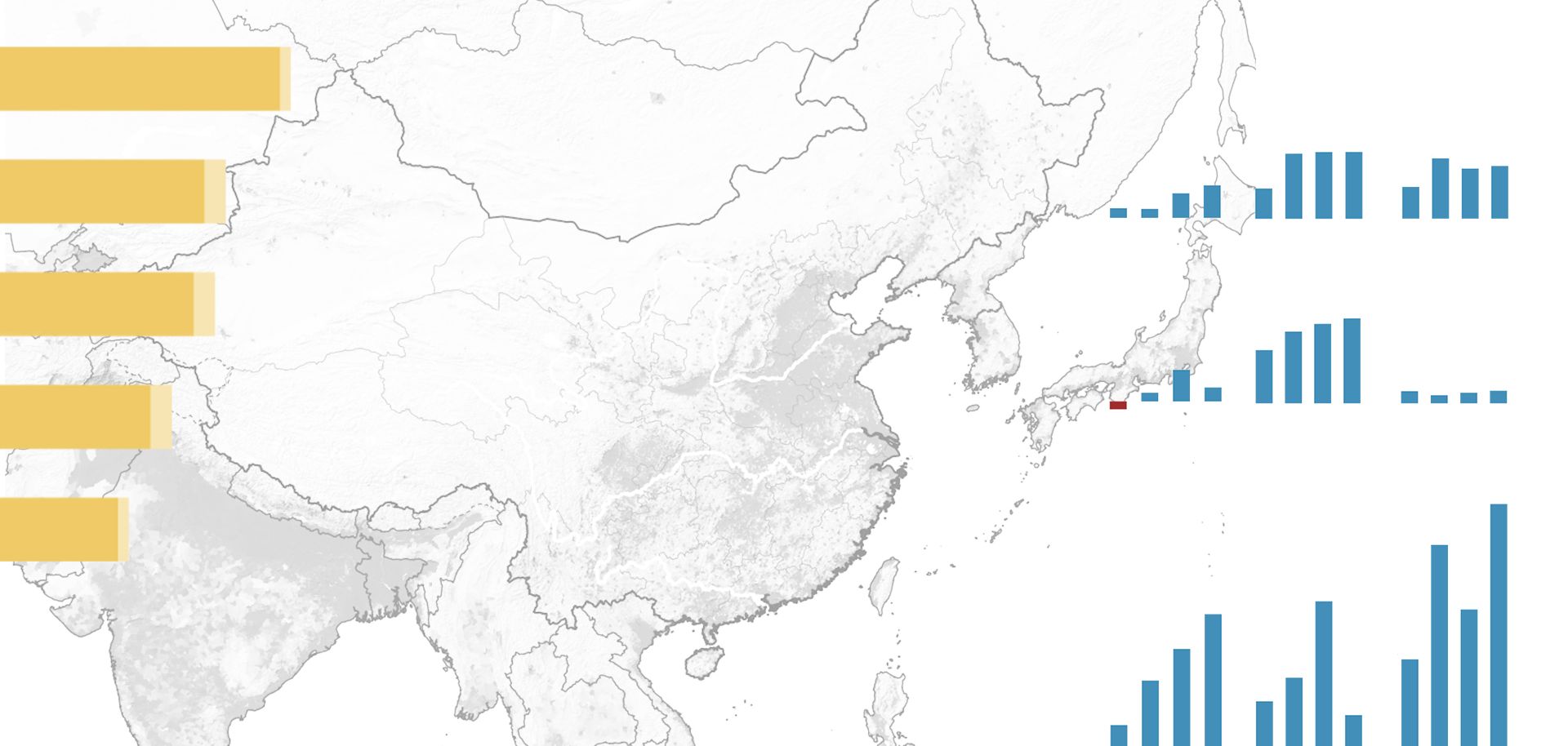
Historically, the Turkmen economy has been fueled primarily by natural gas. Turkmenistan sits on some 32 trillion cubic meters of natural gas, the world's sixth-largest reserves. With a small domestic market, Turkmenistan has been able to export the majority of what it produces. In 2014, for example, the country sold around 41.6 billion cubic meters of its total 69.3 billion cubic meters of output abroad, providing ample revenues for the government's coffers.
In 2015, however, the advantage began to fade. Natural gas exports dropped to 38.1 bcm, even though production actually rose to 72.4 bcm, reflecting problematic changes in the country's export markets. Until 2010, Russia was Turkmenistan's largest market for natural gas, importing around 90 percent of the country's exports before reselling them to Europe. (Iran was the main importer of the remaining 10 percent.) But a pipeline explosion in 2009 caused Turkmen exports to Russia to decline precipitously, from more than 40 bcm in 2008 to less than 3 bcm in 2015.
Complications with these historical export markets have persisted. In November, Russia's Gazprom Export informed Turkmenistan that it would cease all imports of Turkmen natural gas. Last month, Turkmenistan followed through with a threat to halt natural gas exports to Iran over a dispute related to unpaid debts. The cutoff has yet to be resolved.
Turkmenistan has shifted much of its natural gas exports to a new customer: China. The Central Asia-China pipeline began operations in 2009 and was expanded in 2010 and in 2012 to help offset Turkmenistan's gradual loss of the Russian market. Turkmenistan began exporting below 4 bcm per year to China in 2010, but by 2015 that figure had grown to nearly 30 bcm. Chinese demand has helped Turkmen exports return to nearly pre-2010 levels.
The opening of the Chinese market softens the blow of losing Iran and Russia, but the lack of alternative buyers has hurt Turkmenistan's negotiating position with Beijing on pricing. Over the first 10 months of 2016, the average price of Turkmen exports to China dropped from $160 to $100 per thousand cubic meters. Though the volume of Turkmen exports to China saw a slight bump from the previous year, the revenues they yielded fell by 30 percent to $4.7 billion.
This is a troubling development for Turkmenistan, since energy exports account for 80 percent of the government's revenues and 35 percent of its gross domestic product. The country's economy has already come under pressure from the drop in global energy prices, which forced Ashgabat to devalue its currency, the manat, by nearly 20 percent at the beginning of 2015. And though the government claims that the economy grew by 6.2 percent in 2016, its official statistics are highly questionable.



